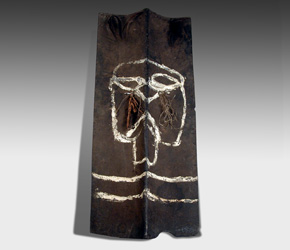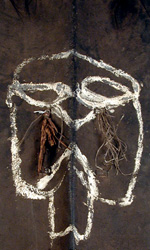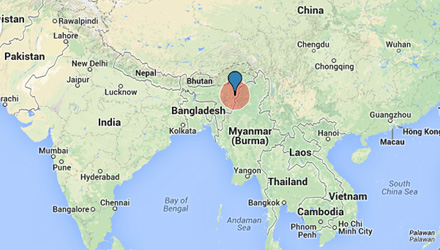Naga Headhunter Shield
 |
|
"Although not practiced, headhunting holds a deeply ingrained religious and cultural meaning for the Naga, and consequently, special emphasis is placed on the creation of armaments typical of those used by headhunters"
The term 'Naga People' refers to a conglomeration of tribes inhabiting Northeast India and Northwest Burma. The tribes have similar cultures and traditions and form the majority of the ethnic peoples found in the Indian state called “Nagaland.” As of 2012, the state of Nagaland officially recognized seventeen separate Naga tribes, which are primarily differentiated by language and tradition; however, all the tribes have a strong warrior past. For the most part, Naga villages are situated on hilltops for defensive purposes, and until the later part of the 19th century they made frequent raids on villages found in the plains below.
 |
|
Similarities among Naga cultures distinguish them from other occupants of the region who are of other ethnicities. One of the prevalent characteristics of the Naga was their ritual practice of headhunting, which they engaged in to take on the power of their enemies. Today, neither this ritual nor behavior is practiced. There are approximately two million Naga people.
Much of Naga ritual and daily life revolves around the acquisition of prestige, especially for men. From feasts celebrating a full granary to their warrior tradition, the Naga commemorate status and significant village events through ritual, the erection of sculptures, and specific dress. Although not practiced, headhunting holds a deeply ingrained religious and cultural meaning for the Naga, and consequently, special emphasis is placed on the creation of armaments typical of those used by headhunters. This shield is a classic mithun or buffalo hide shield of the sort favored by Konyak and Phom (two Naga tribes) warriors. The shield is thick and stiff like wood, and was capable of stopping arrows as well as fending off blows from knife and spear. Like many Naga traditions, the making of a shield is a carefully scheduled and executed procedure, which begins with a week-long purification for the warrior and his family. After the natural materials are gathered, the design and fabrication process begins. Once completed, the shield must be examined by village shamans and elders before it can be declared unblemished and ready to protect the owner in battle. This shield is approximately 100 years old dating from the early 20th century. It is painted with kaolin, soft white clay and depicts a “taunting” face, although the imagery is certainly subject to interpretation.

|
|
Download this Article: Naga Headhunter Shield.pdf